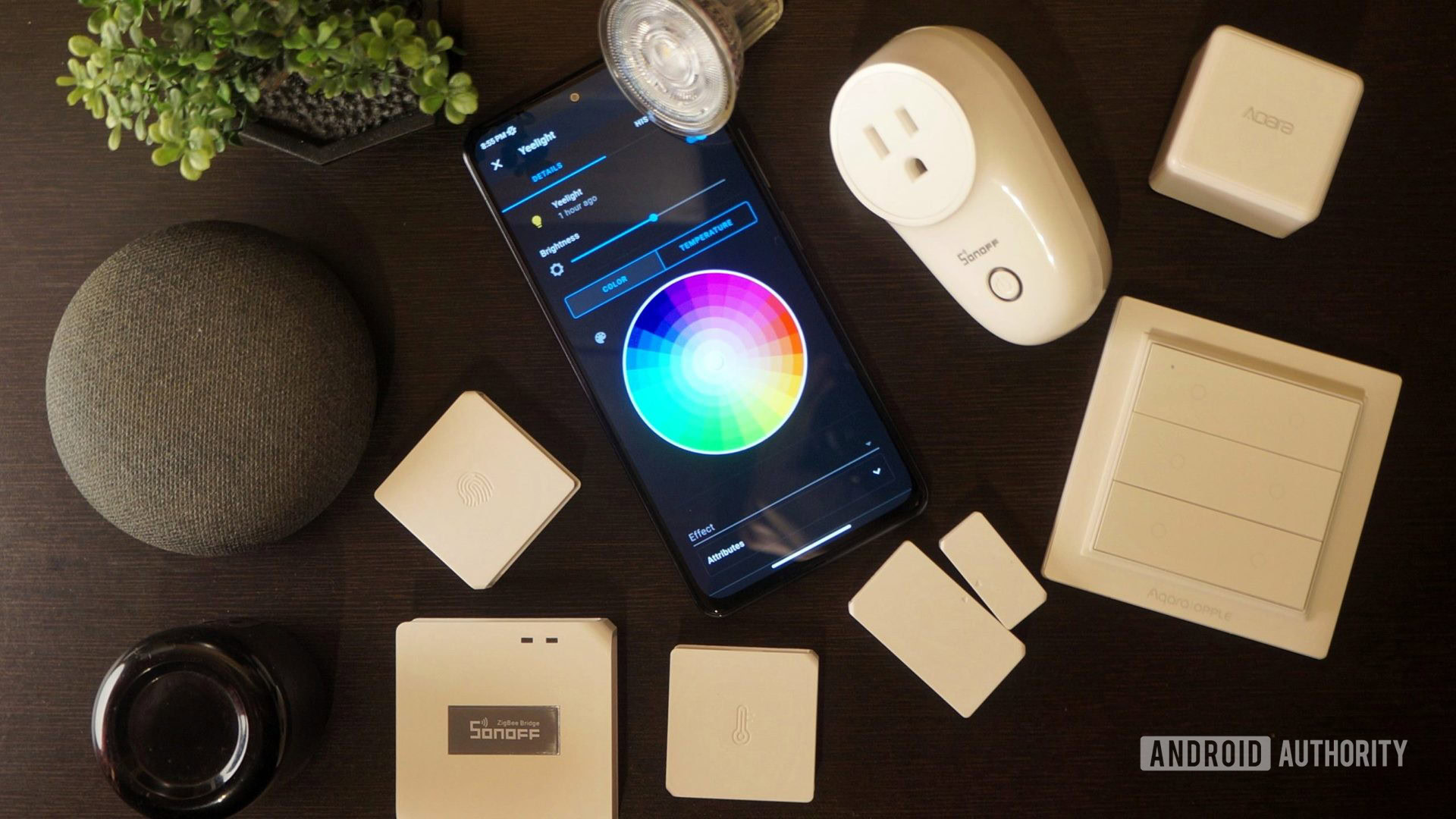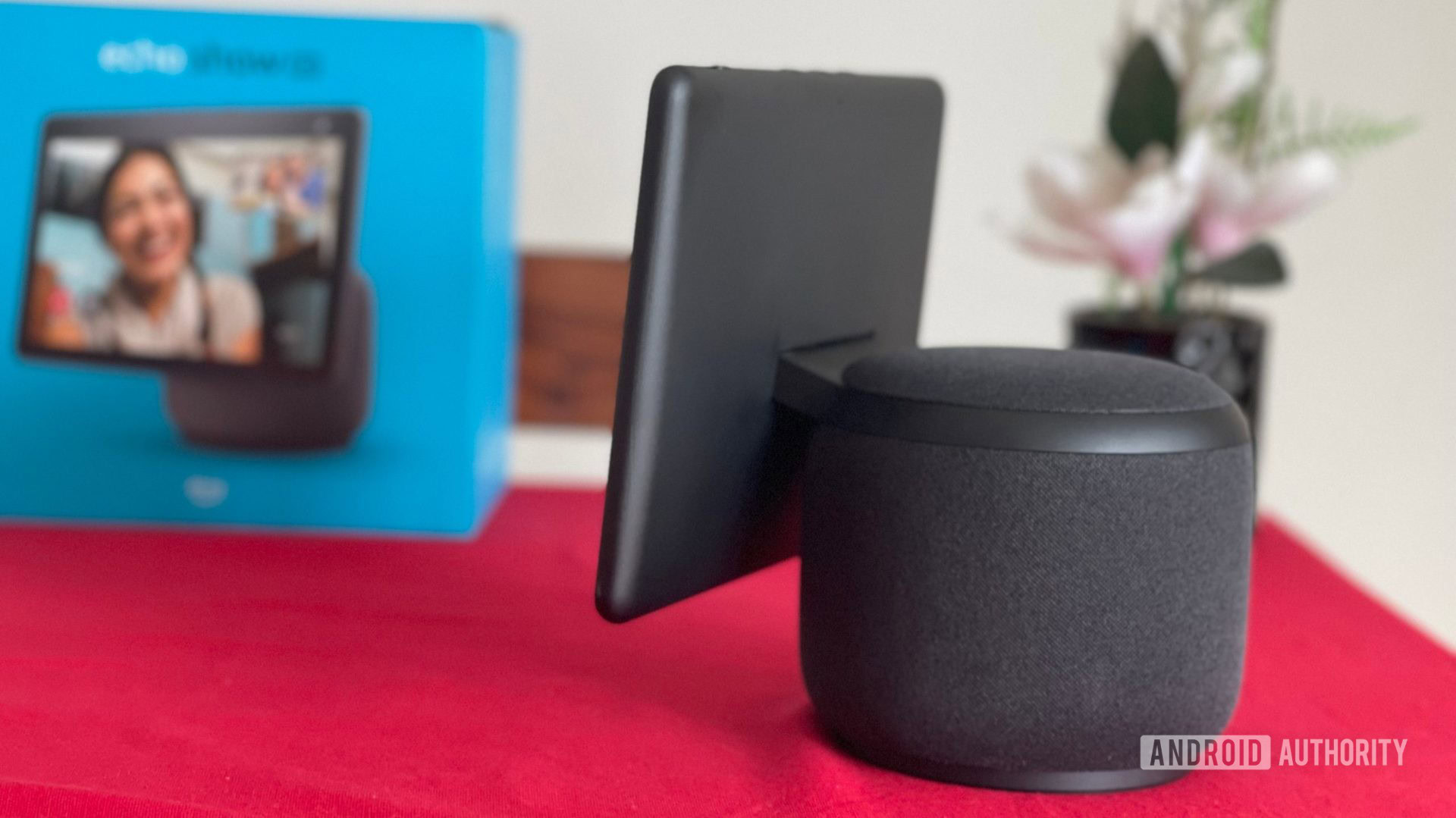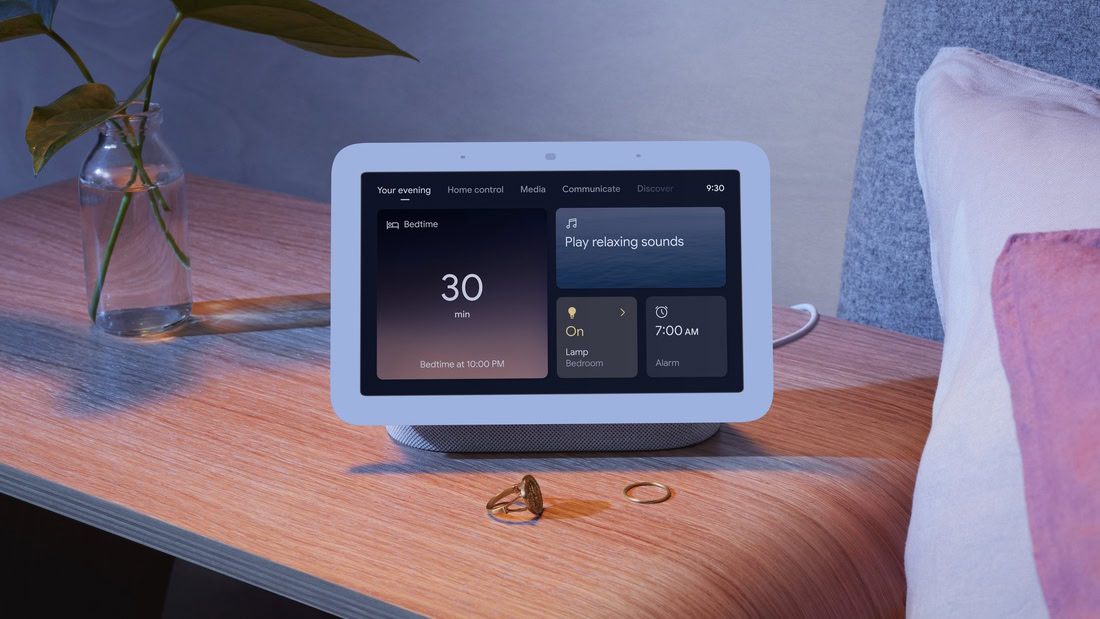Affiliate links on Android Authority may earn us a commission. Learn more.
My tech resolution for 2023 is to smarten up my home

Ah! The good ol’ smart home renovation. A task I’ve put off for a really, really long time. Being a tech journalist, smart home gadgets are naturally appealing to me. I’ve had plenty of them come in for review over the years, be it cheap home security cameras from the likes of Xiaomi, smart speakers from Amazon, Philips Hue and other smart lights, and so on.
While I’ve found many of these smart home devices helpful in their own stead, I still haven’t managed to create a working smart home the likes of which tech companies advertise. You know, where my alarm talks to the coffee machine, kickstarts my robot vacuum cleaner, opens up the blinds, turns on the lights, etc. I admit I’ve been lazy about home automation, but I blame my lack of enthusiasm for building a smart home on the fragmentation in the space.
I blame my lack of enthusiasm on the fragmentation in the smart home space.
There are multiple ecosystems to navigate, including Google’s (Nest/Google Assistant), Apple’s (HomeKit), and Amazon’s (Alexa/Echo). There are smart home devices that work directly with Wi-Fi and a simple companion app, but also those that connect to a proprietary hub and work on different wireless protocols like Zigbee and Z-Wave. Another big barrier between my home and automation is the lack of many key smart home brands in India. Devices from the likes of Nest, Ring, Arlo, or Ecobee, are either unavailable where I live or super expensive to import. But coming next year, I resolve to cross all these hurdles to smarten up my home.
My current (sort of) smart home setup

At present, my barely smart, smart home setup does the absolute minimum. Nothing talks to each other except my Alexa speakers, thanks to a single Amazon account we use at home. I don’t get much out of what I have other than the fact that the devices serve their primary purpose independently. They can do so much more but currently live in a not-so-smart home setup.
I have a few Amazon Echo Dot (3rd Gen) smart speakers scattered around the house to play my music in different rooms. I even have one Echo Dot in the shower. But apart from remote-playing music and asking Alexa for general information, I pretty much don’t do anything else with them.
An Amazon Echo Show 10 (3rd Gen) sits in our living room and assists with music playback, package delivery notifications, reminders, timers, and occasional YouTube videos. I find the built-in camera of the Echo Show 10 really handy. I use it when I am not home to keep an eye on the house and check up on my babies — a human one and a Beagle. The two-way communication allows me to talk to them or just sneakily drop in for a bit of mommy spying.
An Alexa-enabled Yamaha YAS-209 sound bar completes my setup. This lightweight soundbar sounds absolutely fantastic and comes with Alexa baked in. It can help control connected Alexa-enabled smart home devices, but I only use it for music playback.
For my TVs, I went for the LG B9 and LG G2 smart OLED TVs. Both come with built-in Google Assistant, which helps a lot in things like navigation, playing movies and TV shows on streaming services, and switching on things like the connected sound bar and PlayStation 5.
I use two realme 360-degree indoor home security cameras for monitoring my home while I’m away. They have their own ad-heavy app, but since they are Alexa-enabled, I can also view their feed in the Alexa app. The problem is I can only watch a static feed there; I can’t use any of the camera’s other functions. There’s literally no other advantage of having this Alexa integration.
I have supplemented these with a cheap local CCTV camera for outdoor watching. This thing was super affordable, works on Wi-Fi, and has its own app that can help play clips. Unfortunately, it doesn’t work with any smart assistant and isn’t compatible with any smart home protocol.
Related: Alexa vs Google Assistant — what’s different and what’s better
What I want my future smart home to look like

So as you can see, I have multiple smart devices that can control or be controlled by others or with my phone. Clearly, I am not doing much to create the smart home of my dreams. I do, however, have some home automation tasks and devices on my wishlist.
Don’t get me wrong. I am not looking to go all in on home automation like my colleague Calvin Wankhede. I just want a more intelligent home where I can set up some routines, create subsets of devices based on each room in the house, control the lights, and so on. Here’s what I plan to do in the next couple of months.
First, I want to smarten up my lights, fans, and other appliances. I wanted to get on the Philips Hue bandwagon, but unfortunately, I have recessed lights in my house. A good friend recommended I get a single switch relay, one like this from Sonoff, that essentially automates any switch. It also has an app that lets you create groups of devices to control. The best part is these Wi-Fi switches work with both Google Assistant and Alexa for voice commands and are super cheap, so I can buy a bunch of them to spread around the house for controlling everything from lights to fans and even my coffee machine.
A smart home needs to run independently.
Next, I should set up some Alexa routines. Given the plethora of Alexa speakers in my house, it’s high time I started using Alexa routines. Especially since I’ll be automating several switches around the house. A smart home needs to run independently, and that’s where Alexa routines come in. I plan on using routines to automate how the lights and other appliances come on in the house or what music plays when my baby sits down at the dinner table.
I’d also like to get some Nest goodies. I know I said Nest devices aren’t easy to come by in India, but there are a few I am eyeing. I want to diversify my smart home a bit and not be entirely dependent on Amazon’s platform. So yes, the Google Nest Hub (2nd Gen) is on my list, and so is the battery-powered Nest Cam. Fortunately, these two are available in India. The cherry on the cake is that Google’s Nest Hubs are or will be updated with Matter and Thread support, meaning they will all be able to talk to many more smart devices more efficiently in the future.
Matter-enabled purchases will ensure I am ready for the future of the smart home.
I’ll do all of this while keeping Matter on my mind. The new protocol may not be supported by many devices just yet, but it will be in the years to come. The biggest advantage of Matter-enabled devices is that they can work across all major platforms. So I’ll be able to tell Siri on my iPhone to switch on the bedroom lights, and someone else in the house can use the Google Home app on their Android phone to turn on the same lights. Some functions should not even require the internet or a dedicated hub. That’s why I’ll certainly consider buying more Matter-enabled devices as I expand my smart home. Even if the idea of controlling everything in my house with a single app of my choice is still some time away, future-proofing these purchases will ensure I am ready for the next few years and don’t need to start from scratch.
For all of the above, I am currently not looking to spend more than about a $1,000 — less if possible. I’m not saying that would be sufficient to get a fully automated home, but it would surely be a good enough start. I’ll be following up on how my endeavors go in the next six months! So here’s hoping my smart home journey is not a tough one. Got any advice for me? Hit me up in the comments section.